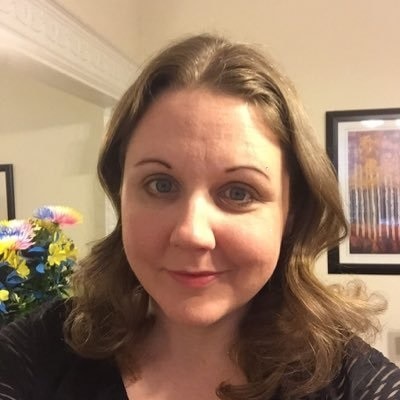As I stand in my empty classroom, desks cleaned out, trash bags full of unwanted workbooks and crumpled papers, loose markers, and glue sticks, I am saddled with not only closing and moving classrooms but also with the gravity of the year.
The process of closing a classroom is always bittersweet. But this year, the landscape is different. In my own desk, I find folded KN95 and surgical masks tangled with paper clips, pens, and partially used pages of stickers. The worst, though, are the leftover adhesive marks on the front and sides of each student’s desk, which secured plexiglass barriers around each child. Those desk shields, cracking and smeared by the end of the year with spit, snot, and sometimes (because it’s third grade) glue or permanent marker, were slowly discarded through the spring. Yet the strips that held them in place, sticky and stubborn, remain attached. Getting them off requires more than a little elbow grease.

It’s like that with teaching. Teaching is physical. Anyone who has ever supervised playground duty, absorbed a punch or slap breaking up a fight, toted multiple bags each day in and out of a building knows the wear and tear on your body. Over time, it shows up in the 20 extra pounds, the worry lines, the gray hair, and the additional medicine you now take to stave off anxiety, pain, and sickness.
But this year, it seemed, we were all sick. Even as we socially distanced, double-masked, and sanitized our hands, so many of us had COVID, the flu, colds, sinus infections, and depression — or some combination thereof.
When teachers were sick, classrooms were combined. We took in students from other classrooms or grades for days or weeks at a time. We lost our specialist teachers as they had to cover other classrooms. We lost our lunch hours and planning time. We struggled and did our best. We were told it wasn’t enough.
My classroom looks like every other year I’ve closed the door in June. But this year leaving, I am the most tired.
Elbow grease is important, but as I’m scrubbing at these adhesive strips I realize (as the adage goes) that I’m working “harder,” not “smarter.” I discover that if I saturate them first with adhesive remover and wait, the glue will break apart and begin to slide off. So I pour the adhesive solution over the sticky spots, taking in that over-lemony scent and watching the slick solution slide over the surfaces my students have written upon, fallen asleep on, and cried into.
While the solution sits, I cart more boxes down the hall. That way I’m not just waiting; I’m working. Teaching is about constantly making time. Teaching is waking up early Saturday morning to finish the work of lesson planning and grading before the rest of the household is up and the TV is on, and the demands of the family take precedence. It’s sacrificing Sundays to put in grades. It’s chatting about upcoming lessons with your colleagues while folding laundry, scrubbing bathroom sinks, and mopping floors. It’s staying late to move desks because your seating chart just isn’t working, to call families, and to rummage through your science kit for the right materials for tomorrow’s lesson.
Once the adhesive strips are soaked, they slide off easily with just a fingernail (though having a putty knife helps). That way, you don’t have to use your fingers, which I had been doing until a red wound appeared on my right index finger. The wound stung with chemicals as I scrubbed.
That’s a reality too. Teachers are wounded. We have absorbed the pain and trauma of our students. We are reeling with our own private heartaches. We come to school sleepless and groggy from the demands of our lives at home. In the minutes before we greet our students we make calls to hospitals, set doctor’s appointments, and check in on loved ones.
We have suffered and prayed and hoped and felt the deep desperation of the past two years. And we are under attack from politicians, parents, and policies. We exist in a literal and figurative landscape of violence.
Once those adhesive strips are off, I stack the desks, draw the shades, and turn off the lights. I take a last look around the room. It looks like every other year I’ve closed the door in June. But this year leaving, I am the most tired.
Sonnee Thiel lives and teaches in the St. Louis area. She finds inspiration in the strength, tenacity, and friendship of her colleagues.



